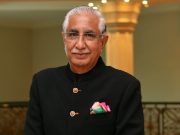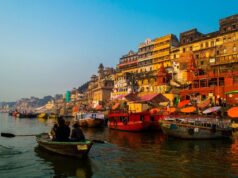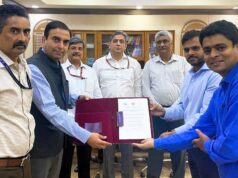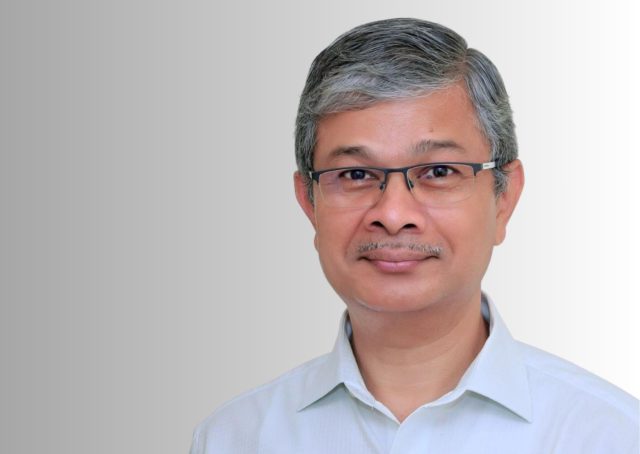
In an exclusive interaction with TTJ, Mukesh Kumar Meshram, IAS, Principal Secretary, Tourism and Culture Department, Director General – Tourism, Government of Uttar Pradesh, reflects on the state’s dynamic tourism growth in 2023, including the opening of the Bhavya Ram Temple and plans for new circuits in 2024. The interview explores Uttar Pradesh’s strategic approach to tourism development and its impact on the state’s cultural and economic landscape, anticipating a surge in visitors in 2024 and beyond.
– Ravi Sharma
Q. How was the year 2023 for UP Tourism? What new products, tourist circuits, destinations, and re-developments were rolled out in the market?
In 2023, Uttar Pradesh Tourism witnessed significant growth with the introduction of diverse products, tourist circuits, and destination developments. The state focused on enhancing its cultural and historical appeal, unveiling new tourist circuits like the Heritage Trail and Adventure Circuit. A major highlight was the inauguration of the Ayodhya Heritage Complex, which attracted pilgrims and history enthusiasts alike. The rejuvenation of key historical sites, such as the Agra Fort and Varanasi Ghats, bolstered tourism infrastructure. Additionally, promoting eco-tourism initiatives in the Dudhwa National Park and the unveiling of the Braj Chaurasi Kos Parikrama project contributed to the sector’s expansion. These strategic measures, aimed at diversifying attractions and improving infrastructure, positively impacted Uttar Pradesh’s tourism, fostering economic growth and cultural exchange.
Several noteworthy projects are currently underway in Uttar Pradesh, India, showcasing a commitment to cultural preservation and tourism development. In the Ayodhya district, efforts include the conservation and beautification of four historical entrance gates, the restoration of 14 religious tourist places, and enhancement projects for 16 religious spots, such as the Rishrabh Sarabh Panas Temple and Hanuman Temple. The Maa Vindhyavasini Corridor in Vindhyachal, Mirzapur, the Chhatrapati Shivaji Maharaj Museum in Agra, and the Sound and Light Show at Rambhar Stupa in Kushinagar reflect a focus on historical and cultural enrichment. Other notable initiatives include the Buddha Theme Park and Digital Kumbh Museum in Kushinagar, Maharaja Shuheldev Smarak in Bahraich, and the Gola Gokaran Nath Corridor in Lakhimpur Kheri. Additionally, the Bankey Bihari Temple Area Development Project in Vrindavan, Mathura, includes underground cabling and a parking facility, contributing to the overall upliftment of these cultural and religious landmarks.
Q. Please elaborate on the growth curve of major destinations and the significant increase in domestic tourism influx into UP in 2023
The state witnessed substantial growth in popular destinations, with Agra, Ayodhya, Prayagraj, and Varanasi leading the influx. Agra, home to the iconic Taj Mahal, continued to attract a large number of visitors. Varanasi, with its spiritual and cultural significance, also experienced dramatic growth in tourist footfall. The Heritage Trail initiative and the Ayodhya Heritage Complex inauguration further fuelled interest, drawing pilgrims and history enthusiasts. Additionally, efforts to promote eco-tourism in Dudhwa National Park contributed to increased visitation. Development initiatives, including enhanced transportation networks and improved accommodation facilities, play a pivotal role in this surge in visitor numbers. These efforts align with the government’s commitment to transforming central UP into a tourism hub, fostering economic growth, and showcasing the rich cultural tapestry of the region to a broader audience.
In the year 2023, tourism statistics for various districts in Uttar Pradesh showcase a substantial influx of visitors, both Indian and foreign. Varanasi emerges as a significant tourist hub, with a total of 84,204,814 visitors, including 84,071,726 Indian tourists and 133,088 foreigners. Ayodhya attracts 20,364,347 visitors, comprising 20,362,713 Indian tourists and 1,634 foreigners. Prayagraj records a total of 44,995,996 visitors, with 44,993,289 being Indian tourists and 2,707 foreigners. The overall tourism scenario for Uttar Pradesh in 2023 is impressive, with a total of 320,150,072 visitors, including 319,195,206 Indian tourists and 954,866 foreigners, emphasising the state’s popularity as a diverse and culturally rich destination.
Q. Have foreign tourist numbers in Uttar Pradesh reached pre-pandemic levels? Please highlight the 2023 initiatives to attract more overseas visitors.
In 2023, overseas visitor numbers to Uttar Pradesh demonstrated a promising recovery, approaching pre-pandemic levels. The state has implemented several initiatives to further attract foreign tourists. The Ayodhya Heritage Complex inauguration and the Heritage Trail project showcased Uttar Pradesh’s cultural richness, capturing international attention. Additionally, targeted marketing campaigns highlighted the state’s historical treasures, such as the Taj Mahal and Varanasi, emphasising safety measures in the post-pandemic context. Collaborative efforts with travel agencies and various online platforms facilitated accessibility for foreign tourists. Infrastructure enhancements and hospitality sector developments also contributed to the appeal. Overall, these initiatives in 2023 were aimed at reviving and surpassing international tourism figures, promoting Uttar Pradesh as a preferred destination for global travellers.
Q. Are there any major initiatives to attract investment into the tourism infrastructure of the state?
In 2023, the state government rolled out policies aimed at fostering public-private partnerships, enticing both domestic and international investors. Special incentives, tax breaks, and streamlined approval processes were introduced to encourage private investment in the development of hotels, resorts, homestays, and other tourism-related projects. Additionally, Uttar Pradesh actively participated in tourism summits and roadshows, showcasing its potential and opportunities to potential investors. The emphasis was placed on enhancing overall infrastructure, including transportation, to facilitate seamless travel for tourists. These strategic measures aimed at attracting investment played a crucial role in elevating the tourism sector, fostering economic growth, and creating a more robust and sustainable tourism infrastructure in the state.
Q. After Ayodhya’s splendid Bhavya Ram Temple inauguration, how will the government manage the anticipated huge footfalls of pilgrims and visitors?
Beyond the cultural and spiritual significance of the Ram Mandir, the inauguration ceremony spotlighted Ayodhya’s potential as a central hub for Uttar Pradesh’s tourism-driven economic growth. The city is now poised to play a pivotal role in the state’s tourism economy, with strategic enhancements in connectivity and infrastructure. The government has focused on developing adequate infrastructure to handle the expected large influx of pilgrims, including advanced transport facilities, accommodation options, and crowd management systems. Collaborative efforts with local communities and law enforcement agencies aim to ensure a safe and organised pilgrimage experience.
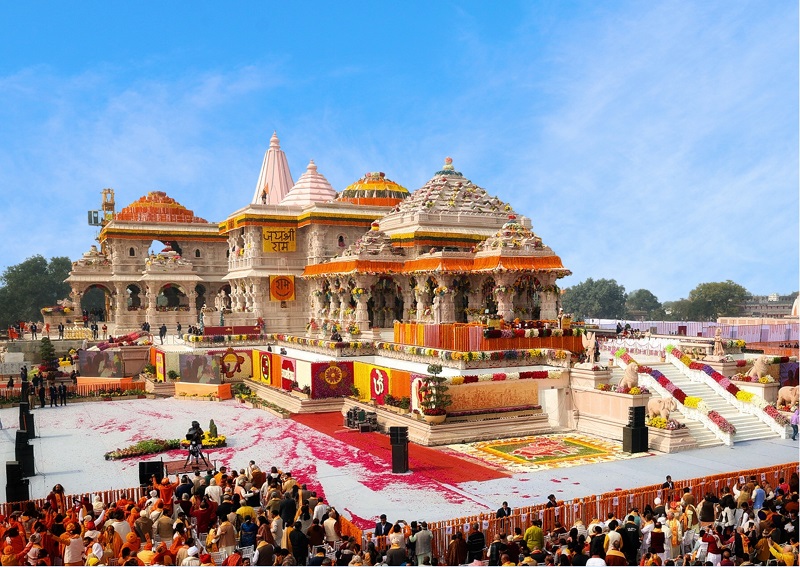
Local businesses are seizing the opportunity, with around 600 paying guest facilities registered and certificates issued for 441 of them. Approximately 2,500 paying guest rooms are anticipated, incorporating homestays into Ayodhya’s tourism strategy. This not only enriches the tourist experience with authentic cultural immersion but also fosters sustainable tourism practices, creating economic opportunities for local communities.
Ayodhya’s transformation into a tourism epicentre is supported by a comprehensive plan, including the establishment of an airport and improvements in railway and bus connectivity. These measures ensure seamless accessibility for tourists, not only from across the nation but also opening avenues for international visitors. The strategic development of infrastructure, accommodations, and amenities in Ayodhya will contribute to an enriched tourist experience.
Q. What other new tourist circuits and products are expected to be rolled out in 2024?
The state plans to unveil the Ganges Heritage Circuit, focusing on the cultural and historical significance of the Ganges River. Additionally, the Wildlife Expedition Circuit, centred around Dudhwa National Park, aims to promote eco-tourism. Initiatives like the Spiritual Retreat Circuit and the Rural Immersion Experience will provide visitors with unique and immersive encounters. The integration of technology, such as augmented reality guides, is expected to enhance the tourist experience.
Tourist activity in Uttar Pradesh has dynamically expanded into central Uttar Pradesh, driven by iconic destinations like Ayodhya, Varanasi, and Prayagraj. Varanasi, a spiritual and historical gem, has experienced increased footfall. Key tourist spots in the Varanasi district include the renowned Kashi Vishvanath Temple, the city’s 88 ghats along the River Ganges, Sarnath, and many other important temples dedicated to Hinduism and Jainism. Prayagraj, renowned for the Kumbh Mela and Sangam, adds a grand dimension to the tourism landscape. The upcoming Kumbh Mela is expected to attract vast crowds, highlighting the region’s cultural vibrancy. Noteworthy sites in Prayagraj include the Law Museum and Archives, Allahabad Museum, the New Yamuna Bridge, Khusro Bagh, Anand Bhawan, Chandra Shekhar Azad Park (Alfred Park), etc.






















